Palmyra - the pearl of Syrian Desert
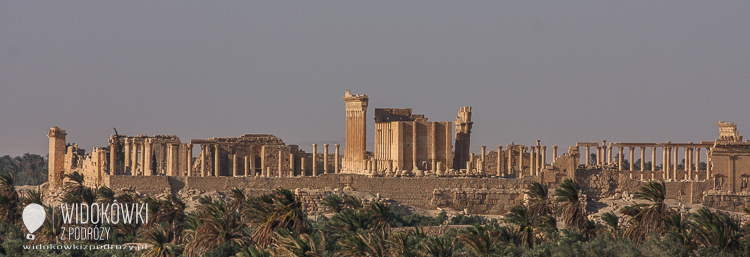
A small city in Syria - Tadmur is the former great oasis, where for several centuries prospered legendary rich city of Palmyra. It is located in the desert Syrian Desert, where there are abundant water sources and runs a convenient passage through the mountains from the Euphrates valley to Homs.
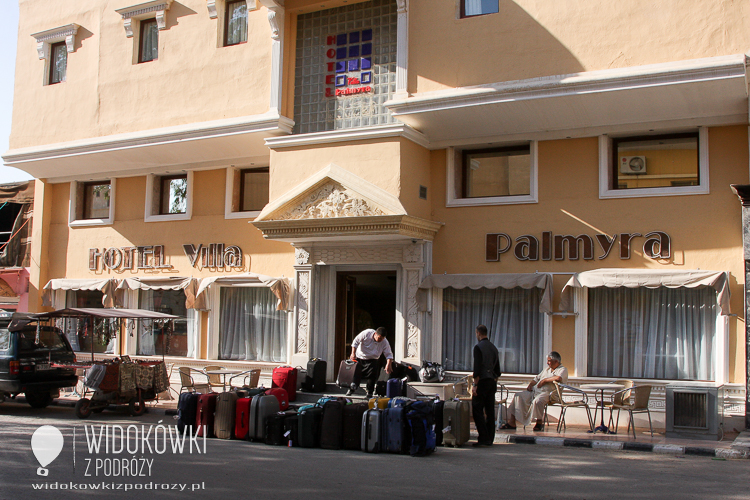
Nearby are large military bases and heavy underground prison, so the way guide asks not to look around for tanks on the horizon and absolutely not to do them the pictures. We come to the town alive with tourists visiting the ruins, museum visitors, buyers of silver - all live here from Palmyra, even with the restaurant overlooking the panorama of the ancient city. It developed it in the first and second century of our era, being the most important broker between East and West - it was mainly the exchange of small quantities of luxury goods, reaching dizzying prices and bringing wealth to the city.
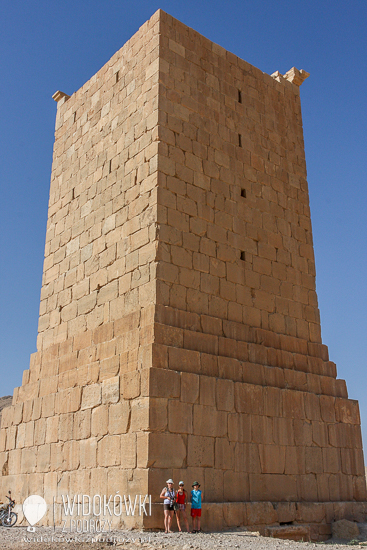
What now remains of the former glory? The largest and best-preserved building is the temple of Bala - building on the side of the 200 meters with a beautifully carved arcades, rows of columns and remnants of the sacrificial altar. From the temple, you can go to the great colonnade, which stretches the length of a kilometer in places still paved. Today there are only columns, but for centuries was covered with a roof to protect against the sun, and we now dissolve in 40 degree heat. Only they look good camels, as centuries ago to encourage them to hold on the trip.
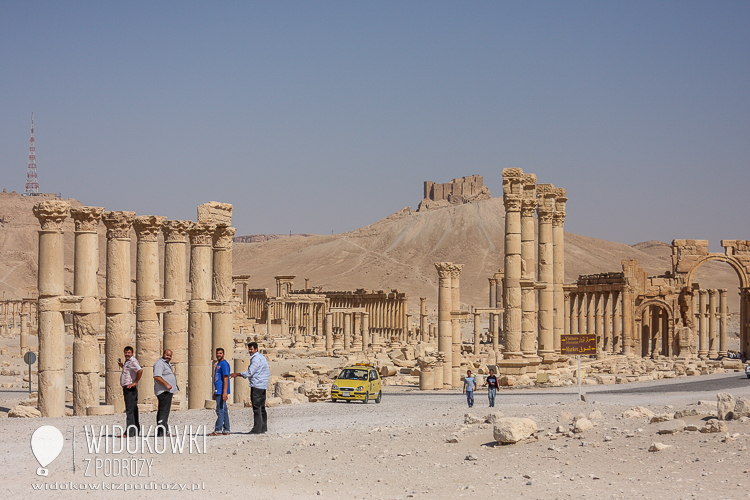
Near the town is worth a visit to the Valley of the Tombs with interesting funerary towers and underground tombs. The interiors were built on several floors of the long and narrow niches where the dead were buried, and bas-reliefs with their likenesses closed holes niches. In museums Palmyra and Damascus can admire the artistry of the ancient stonemasons and sculptors, there were transferred many of the gravestones from the valley.
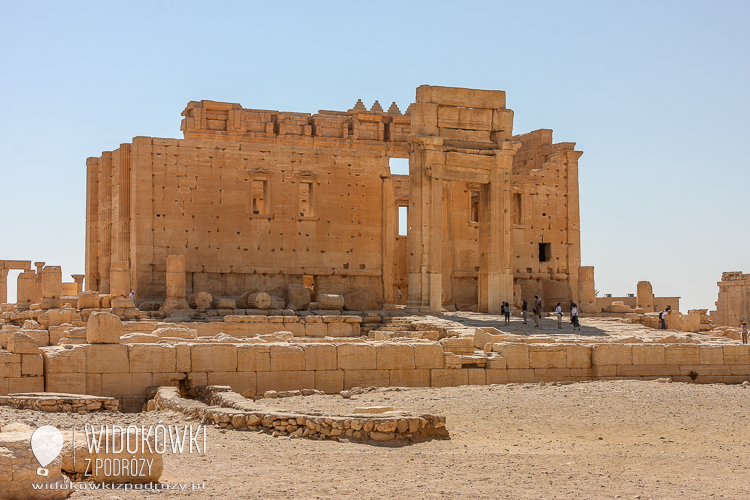
It is a pity that today Syria is still functioning in the news, as a country brutally suppressed democratic movements. It would be better still to hear about our archeologist Professor Kazimierz Michalowski, who also made many discoveries in Syria in Palmyra.
Photographs taken in 2008.
Text: Katarzyna Stor
Photos: Katarzyna and Marek Stor
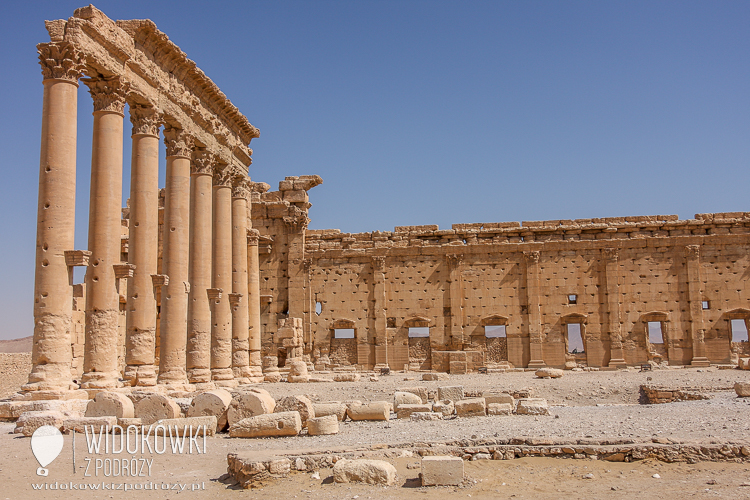
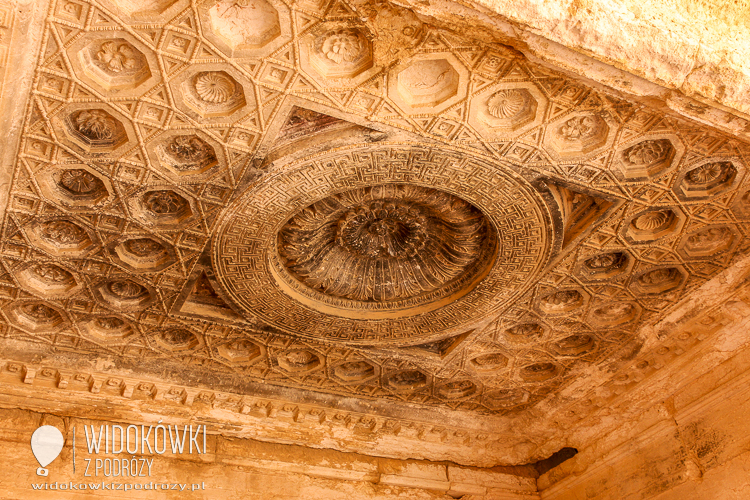
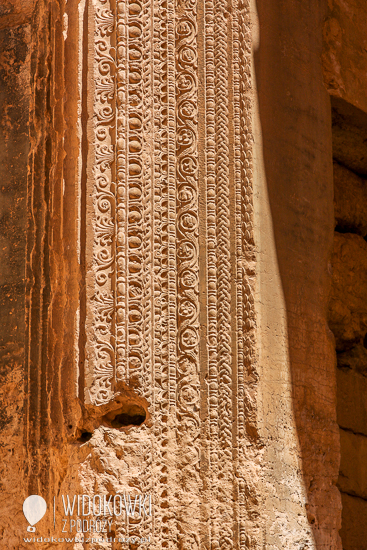
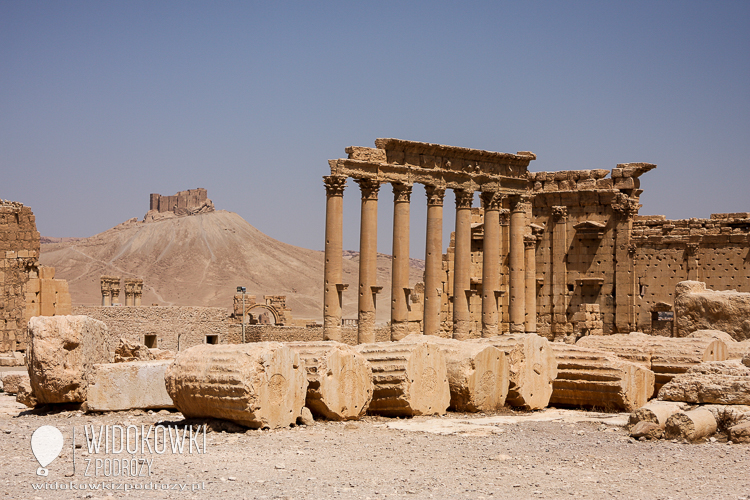
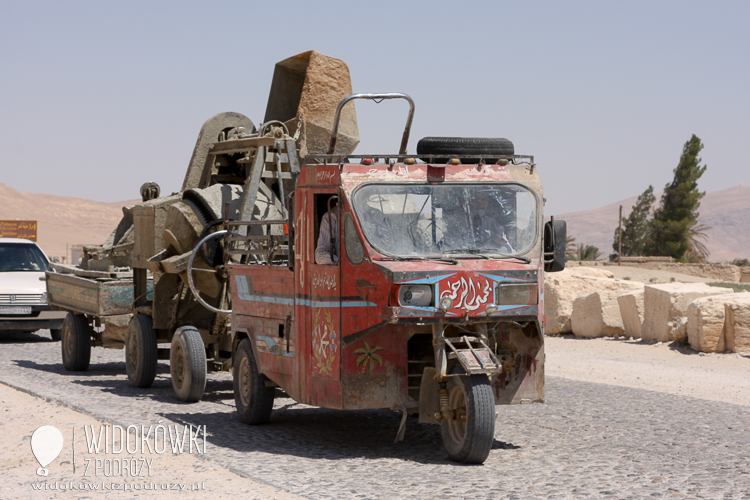
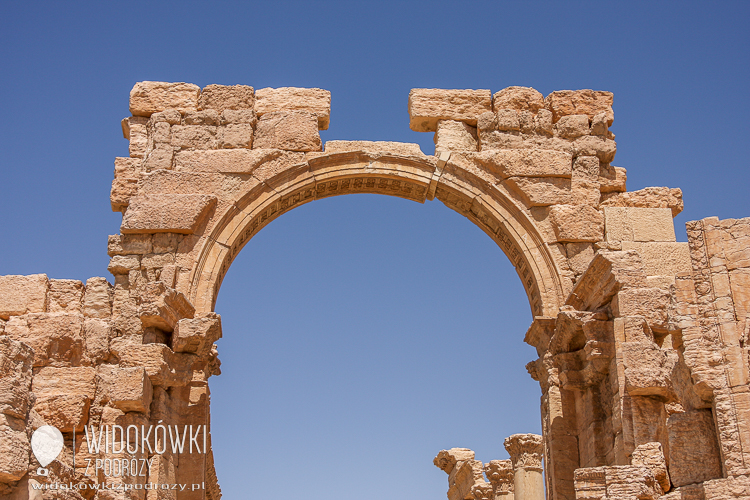
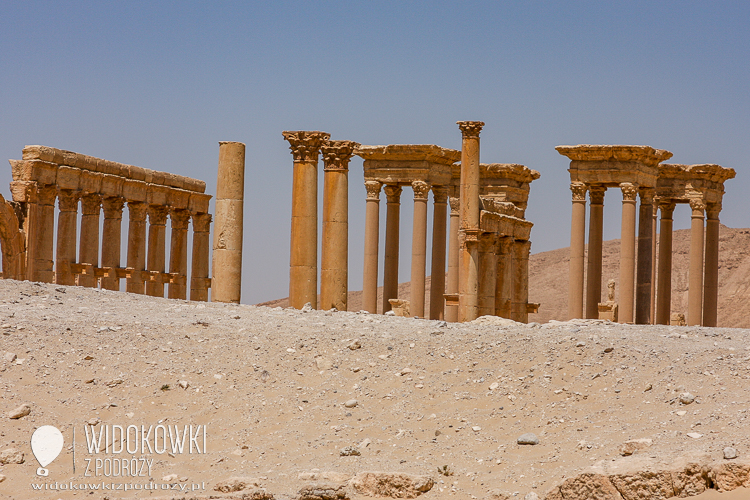
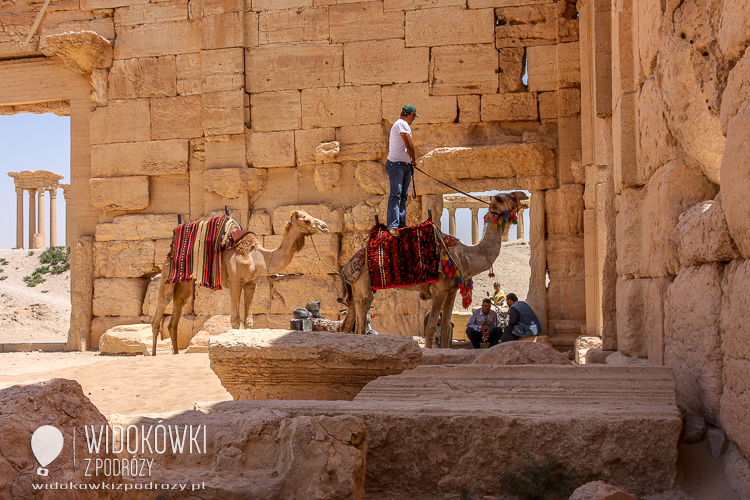
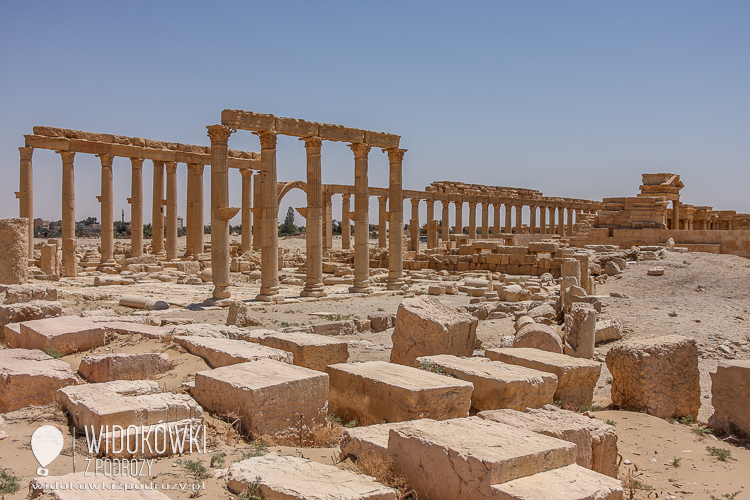
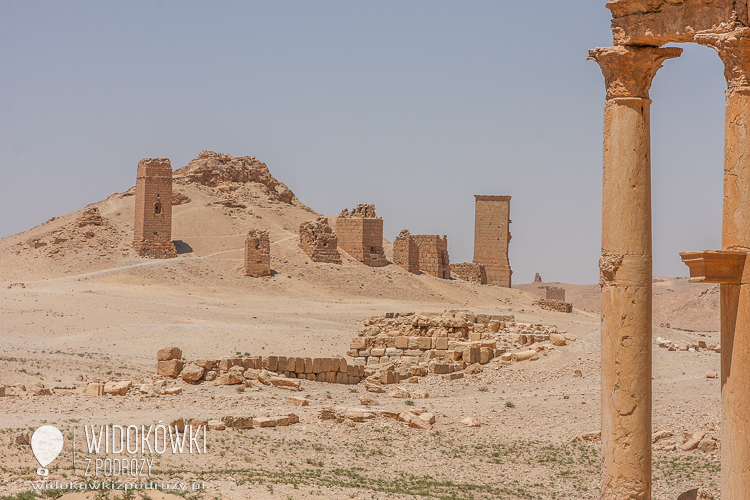
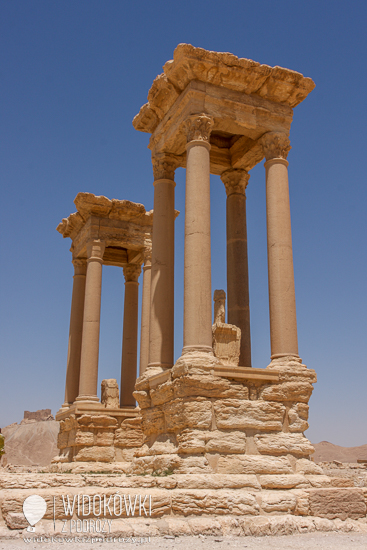
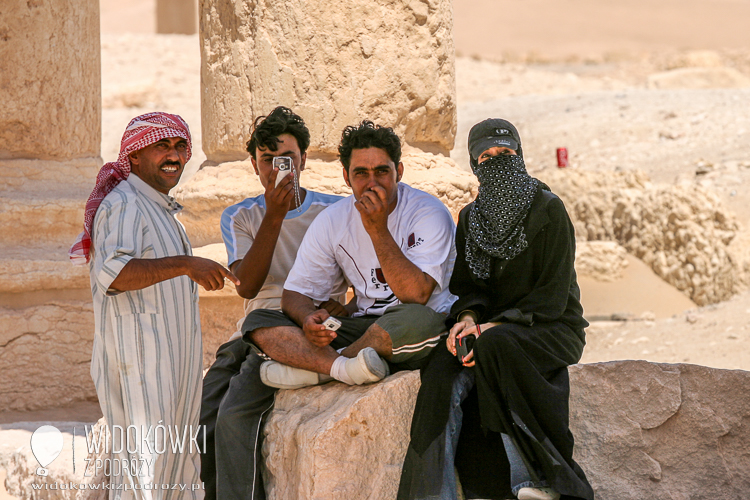
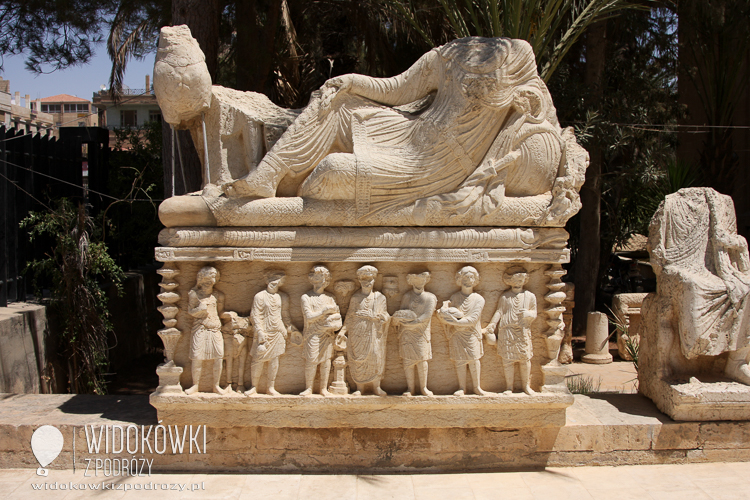
Palmyra – perła Pustyni Syryjskiej
Niewielkie miasto w Syrii — Tadmur to dawna wielka oaza,w której przez parę wieków prosperowało legendarne, bogate miasto Palmyra. Leży ono na pustkowiu Pustyni Syryjskiej, gdzie są obfite źródła wody i biegnie dogodne przejście przez góry z doliny Eufratu do Hims.W pobliżu znajdują się wielkie bazy wojskowe i ciężkie podziemne więzienia, więc po drodze przewodnik prosi, aby nie rozglądać się za czołgami na horyzoncie i absolutnie nie robić im zdjęć. Przybywamy do miasteczka żyjącego z turystów odwiedzających ruiny, zwiedzających muzea, kupujących srebra — wszystko tu żyje z Palmyry, nawet z hotelowej restauracji rozpościera się widok na panoramę starożytnego miasta. Rozwinęło się ono w I i II wieku naszej ery, będąc najważniejszym pośrednikiem w handlu między wschodem a zachodem — była to głównie wymiana małych ilości luksusowych towarów, osiągających zawrotne ceny i przynoszących miastu bogactwo.
Co dziś pozostało z tej dawnej świetności? Największa i najlepiej zachowana budowla to świątynia Bala — budynek o boku 200 metrów z przepięknie rzeźbionymi portykami, rzędami kolumn i pozostałościami ołtarza ofiarnego. Ze świątyni można przejść do wielkiej kolumnady, która ciągnie się na długości kilometra, miejscami nadal brukowana. Dziś pozostały tylko kolumny, lecz przed wiekami była przykryta dachem chroniącym przed słońcem, a my teraz rozpuszczamy się w 40 stopniowym upale. Jedynie dobrze wyglądają wielbłądy, jak przed wiekami zachęcające do odbycia na nich podróży.
W pobliżu miasta warto zajrzeć do Doliny Grobowców z ciekawymi wieżami grobowymi i grobowcami podziemnymi. We wnętrzach na kilku piętrach budowano długie i wąskie nisze, gdzie chowano zmarłych, a płaskorzeźby z ich podobiznami zamykały otwory nisz. W muzeach Palmyry i Damaszku można podziwiać kunszt dawnych kamieniarzy i rzeźbiarzy, tam przeniesiono wiele z tablic nagrobnych z doliny.
Szkoda, że dziś Syria ciągle funkcjonuje w wiadomościach, jako kraj krwawo tłumionych ruchów demokratycznych. Lepiej byłoby nadal słyszeć o naszym archeologu profesorze Kazimierzu Michałowskim, który poczynił wiele odkryć także w Syrii w Palmyrze.
Fotografie wykonane w 2008 roku.
Tekst: Katarzyna Stor
Zdjęcia: Katarzyna i Marek Stor
Tekst opublikowany w "Gazecie Powiatowej" 23 sierpnia 2011 roku.
"Widokówki w podróży" to cykl artykułów fotograficzno-podróżniczych, ukazujących sie od 2011 roku na łamach legionowskiej "Gazety Powiatowej".











